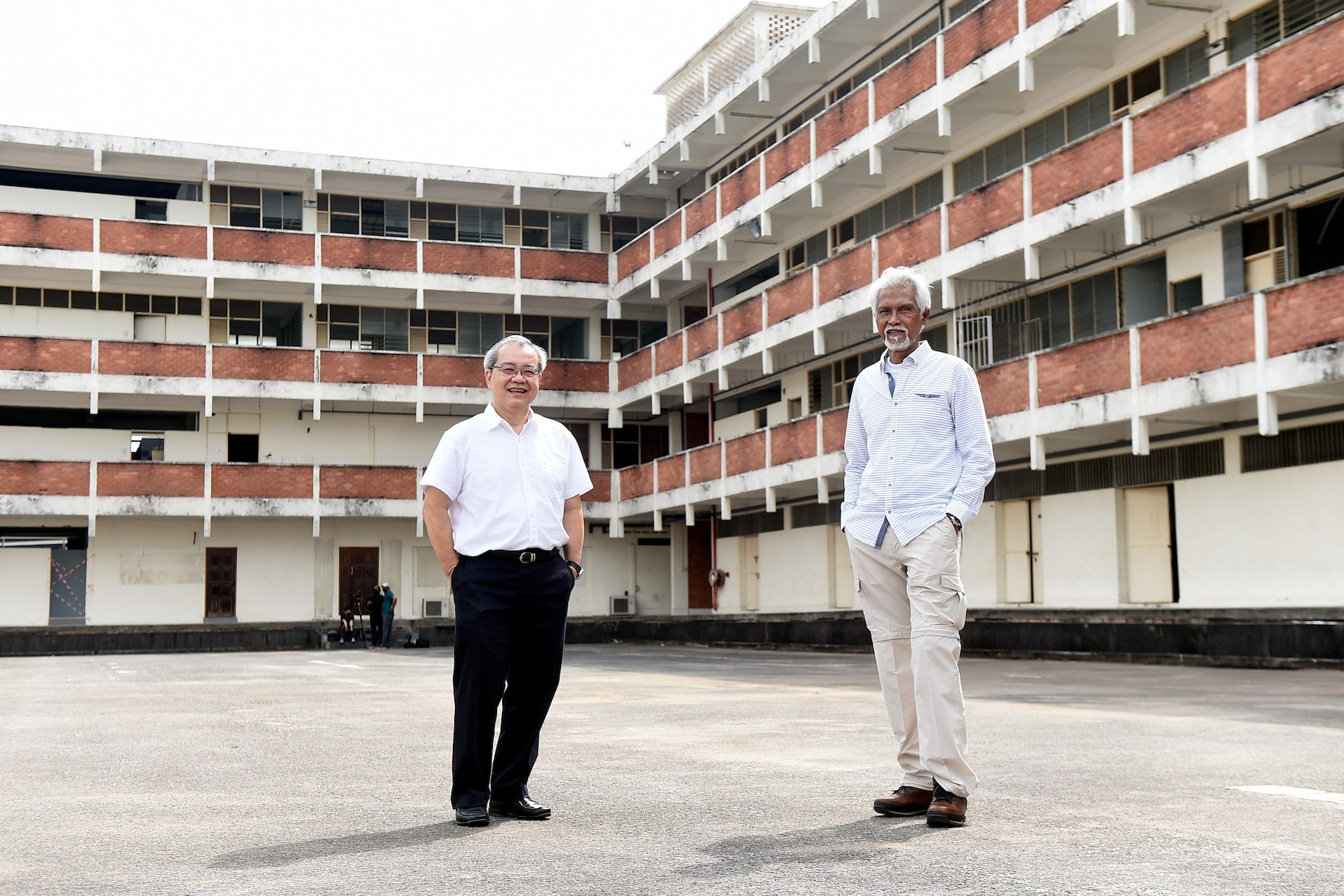GOODBYE GUILLEMARD CAMP
The camp was most recently used as a facility for recovering COVID-19 patients in 2020 but veterans of 1 SIR will forever remember it as their home of 34 years.Snakes hiding inside manholes and students making a nuisance near camp grounds – Guillemard Camp certainly had its quirks.
It had its glory days too. It was built to house the Singapore Armed Forces' (SAF's) first infantry unit – the 1st Battalion, Singapore Infantry Regiment (1 SIR) – in January 1969. The camp saw 1 SIR through various milestones, from being presented with new Regimental Colours on its 25th anniversary in 1982, to being the birthplace of its Leopard emblem (which is still in use today) in 1986.
When 1 SIR moved out in 2003, the camp continued to be occupied by the SAF. In 2020, the vacated camp was then converted into a Community Recovery Facility, to house migrant worker patients recovering from COVID-19.
Saying goodbye
Now, the camp has reached the end of its line. It was returned to the State earlier this year, and will be demolished by the end of the month. The site, located between Dunman Road and Guillemard Road, has been earmarked for redevelopment.
On 22 Jan, veterans from all intakes of 1 SIR returned to the camp for one last time, to bid farewell to their home of 34 years.
"A part of our history will be gone, but it's the right thing to do," said former Regimental Sergeant Major (RSM), 1st Warrant Officer (1WO)(Ret) Wahab Hussain during his visit.
Thanks for the memories
Walking past the old buildings of Guillemard Camp, 1WO (Ret) Wahab recalled the early days when the unit would receive complaints about training noise from nearby residents.
On top of that, the camp was located near to schools and had many teenagers loitering near camp grounds after school and causing a nuisance.
"My then-Commanding Officer (CO) visited the principals to tell them about our situation. We also visited the neighbours; and whenever we had a CO’s night or open house, we also invited them," said 1WO (Ret) Wahab, who was the RSM of the 2nd and 3rd Mono Intake from 1983 to 1987.
"They were very pleased with that and from them on, we had a very good relationship with the neighbours and schools," he said.
His proudest moment in Guillemard Camp would be helping in preserving the heritage of 1 SIR through the setting up of a History Room, located behind where the officer's mess used to be.
"There were many things I collected that you don't see in the Army now: our hose socks and pouches, our cap badges, shoulder plates, and formation signs," shared the 74-year-old, who is now working in a jewellery design school. He retired from the SAF in 1997 as Officer Commanding of the then-Advanced Specialists Training Wing.
"It was not easy procuring these items as people did not give them up easily. So, there was the satisfaction of putting them together for everyone to see," he said. 1 SIR continues to maintain the History Room today, at its new grounds in Mandai Hill Camp.
Human connection
For Colonel (COL) (Ret) Lee Wai Mun, former Commanding Officer of 1 SIR's 4th Mono Intake from 1987 to 1989, the camp was particularly memorable for the events his unit helped organise while based there, including the first Exercise Semangat Bersatu and the 1989 National Day Parade (NDP).
The unit was part of the NDP 1989 organising committee (led by the 2nd Singapore Infantry Brigade), and held many rehearsals and planning sessions in Guillemard Camp.
When asked about his favourite spot in the camp, COL (Ret) Lee said that it would be the headquarters block
"When I stood on the veranda there, I could see the armoury, my support stores, and my men doing their physical training across at the parade square.
"It's very interesting that we all have that connection in that space," said COL (Ret) Lee, who retired from SAF as Assistant Chief of the General Staff (ACGS) (Logistics) in 1997 and is now head of Automobile Association, Singapore.
He added that while the land Guillemard Camp sits on will undergo change to fulfil new requirements, the memories remain with the people who used to work there.
"(We will all remember) the events and activities we did, how people came together at different times and in different capacities.
"That's what builds the bonds and friendships and we know that we can always come back together again."










